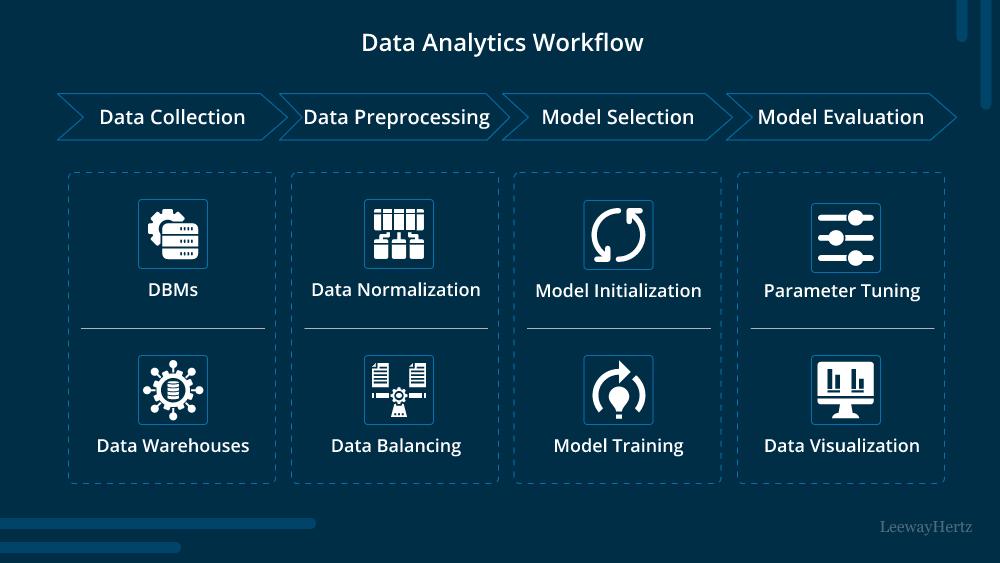
3 minute read
MATLAB
MATLAB is a programming language and environment commonly used in scientific and engineering fields for numerical computation, data analysis, and modeling. It offers a range of in-built functions and toolboxes for performing advanced mathematical and statistical analysis, data visualization, and algorithm development.
Jupyter Notebooks
Advertisement
Jupyter Notebooks is an open-source web application allowing users to generate and share documents that contain live code, visualizations, and explanatory text. It supports multiple programming languages, including Python, R, and Julia, making it a versatile tool for data analysis, exploratory data analysis (EDA), and collaborative research.
These tools offer various features and capabilities for different aspects of data analysis, and the choice of tool depends on the specific requirements, preferences, and expertise of the data analyst or scientist.
Data security and ethics
Data security and ethics are crucial aspects of working with data, especially in the context of data analysis and data science. Let us explore each of these areas:
1. Data security: Data security involves protecting data from unauthorized access, use, disclosure, alteration, or destruction. It is essential to ensure data confidentiality, integrity, and availability throughout its lifecycle. Here are some key considerations for data security:
Access control: Implementing measures to control access to data, including authentication, authorization, and role-based access controls. This allows only authorized individuals to access sensitive data.
Data encryption: Using encryption techniques to secure data during transmission and storage. Encryption helps protect data from being intercepted or accessed by unauthorized parties.
Data backups and disaster recovery: Regularly backing up data and having mechanisms in place to recover data in case of a system failure, data loss, or cyberattack.
Secure data storage: It involves utilizing secure storage solutions, such as encrypted databases or cloud services with robust security measures, to protect data from unauthorized access.
Data anonymization: Removing Personally Identifiable Information (PII) or any sensitive data that can be connected to individuals, ensuring that data cannot be traced back to specific individuals.
Monitoring and logging: Implementing systems to monitor data access, detect unusual activity or breaches, and maintain logs for auditing purposes.
Employee training and awareness: Providing training and raising awareness among employees about data security best practices, such as strong password management, phishing prevention, and safe data handling.
2. Data ethics: Data ethics refers to the responsible and ethical usage of data, ensuring that data analysis and data science practices are conducted in a manner that respects privacy, fairness, transparency, and accountability. Here are some key considerations for data ethics:
Privacy protection: Respecting privacy rights and ensuring that data collection, storage, and analysis comply with applicable privacy laws and regulations. Minimizing the collection and retention of personally identifiable information to the extent required for the intended purpose.
Informed consent: Obtaining informed consent from individuals whose data is being collected, providing clear details about how their data will be used and assuring they have the chance to opt out or withdraw consent.
Fairness and bias mitigation: Taking steps to mitigate bias in data analysis and modeling, ensuring that algorithms and models do not discriminate or disadvantage specific groups of people based on aspects like race, gender, or socioeconomic status.
Transparency: Being transparent about data collection and usage practices, providing clear explanations of data analysis methods, and ensuring that individuals have visibility into how their data is being used.
Accountability and governance: Establishing governance frameworks and policies that define roles, responsibilities, and accountability for data handling, ensuring that ethical guidelines are followed, and addressing any potential ethical concerns or issues.
Responsible data sharing: Ensuring that data is shared appropriately, with proper safeguards and anonymization techniques to protect privacy and prevent unauthorized access or misuse.
Data bias and interpretability: Being aware of potential biases in the data and interpreting the results responsibly and accurately, avoiding misrepresentation or misinterpretation of the findings.
Data security and ethics are critical components of responsible data management. By implementing robust security measures and adhering to ethical principles, organizations can ensure the protection of data, respect individuals’ privacy rights, and maintain trust in their data analysis and data science practices.
Endnote
Data analysis is pivotal in unlocking valuable insights and driving informed decisionmaking in today’s data-driven world. Organizations and individuals can gain a deeper understanding of trends, patterns, and correlations that can lead to significant advantages through the systematic examination, interpretation, and modeling of large datasets. Data analysis allows us to uncover hidden opportunities, identify potential risks, optimize processes, and enhance performance across various sectors, including healthcare, finance, and research. By harnessing the power of data analysis tools and techniques, we can make data-driven decisions, improve business outcomes, and pave the way for innovation and progress. However, it is crucial to approach data analysis with care,


